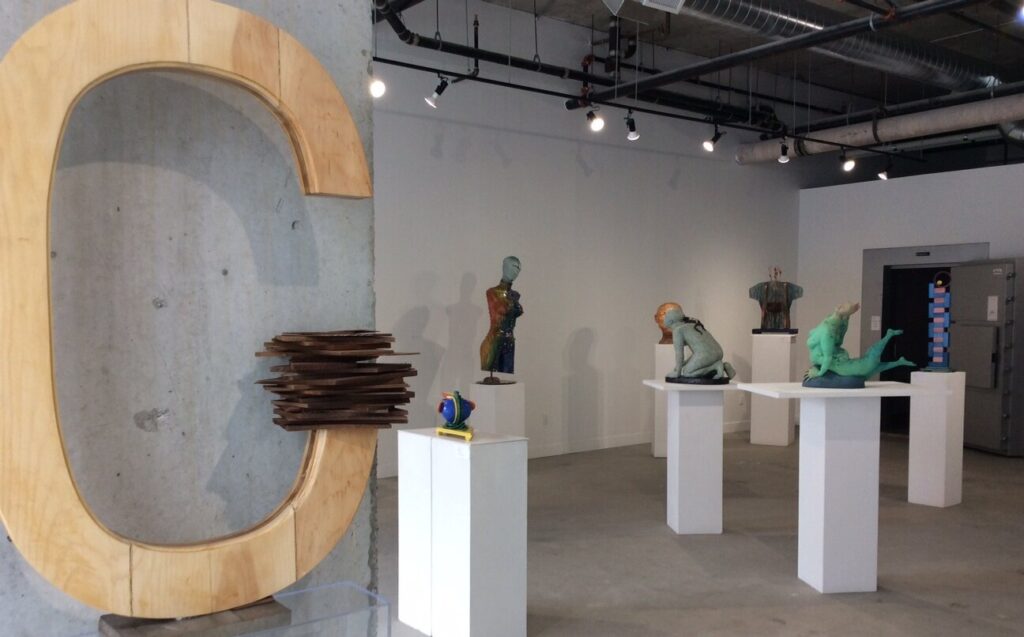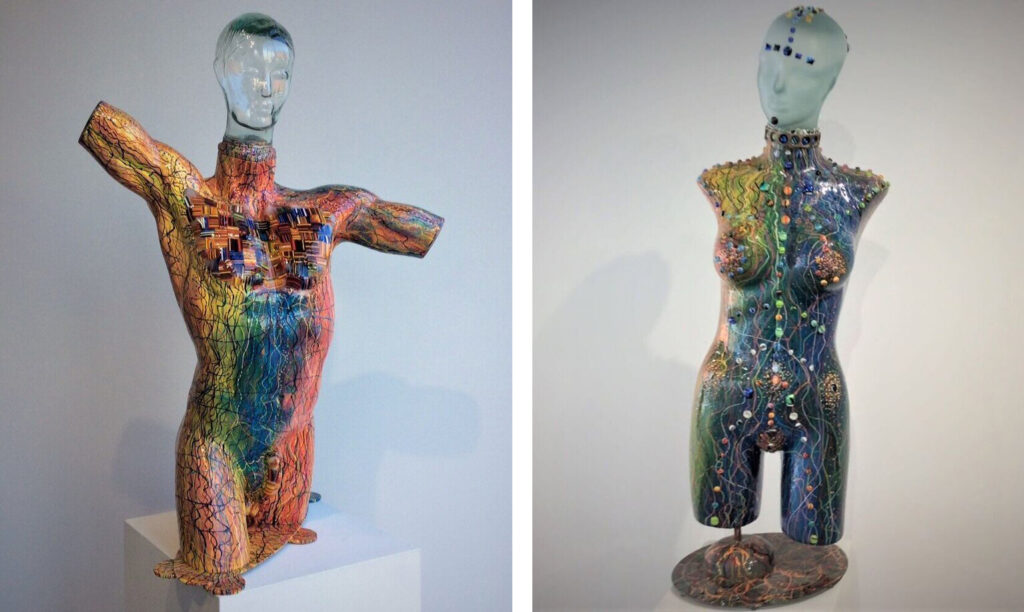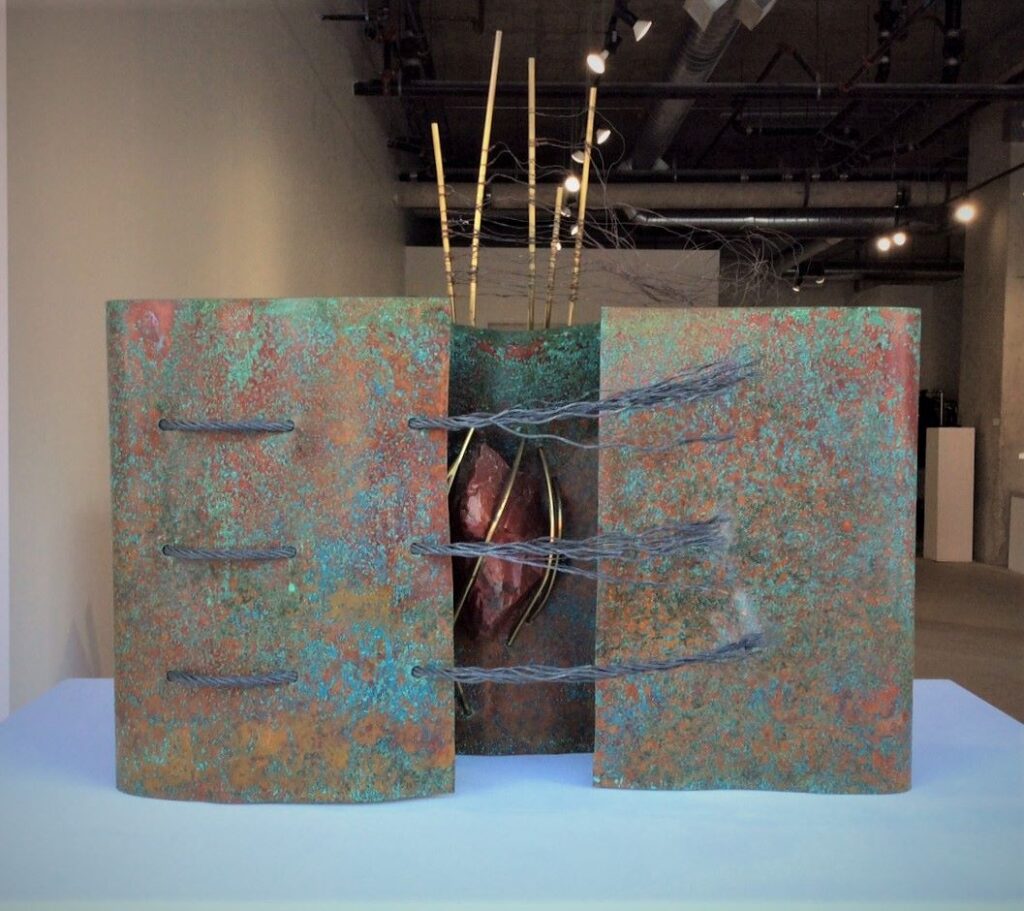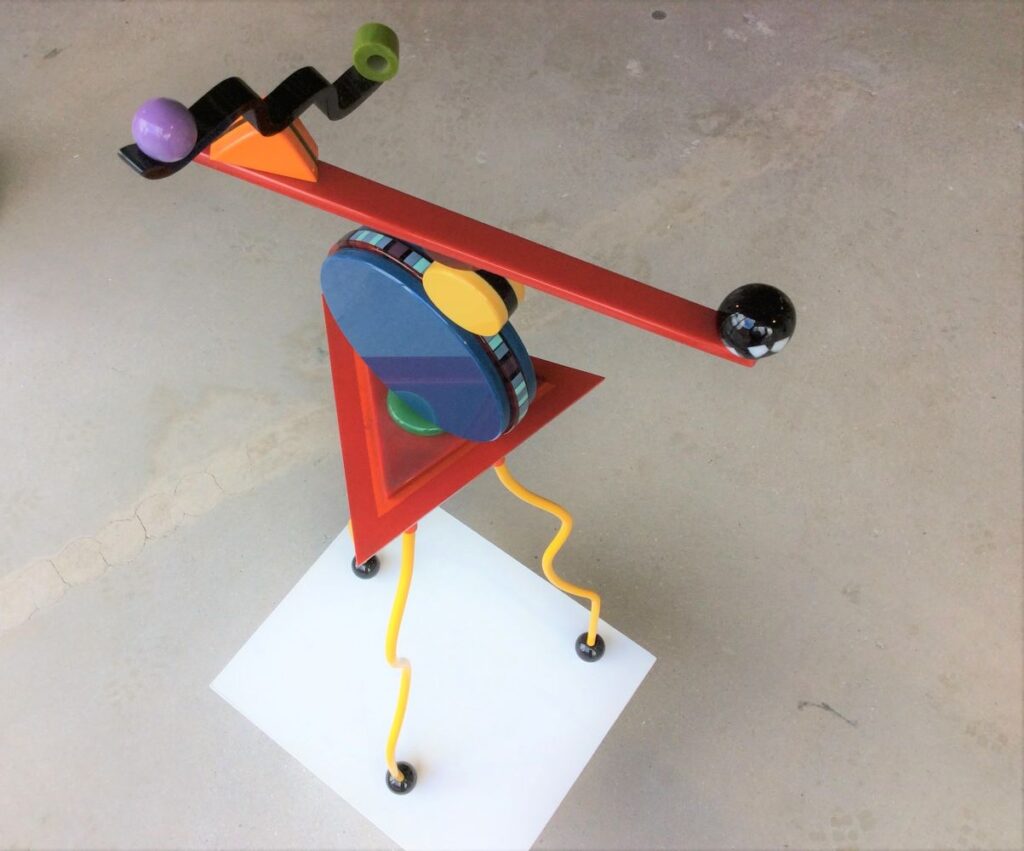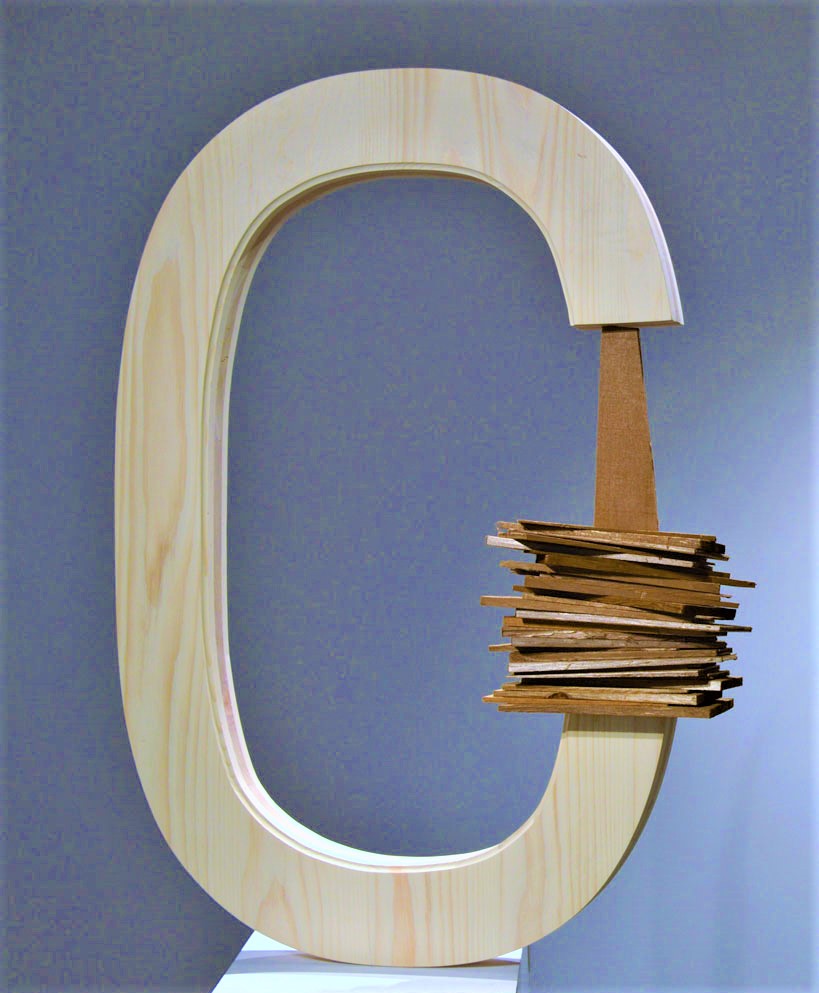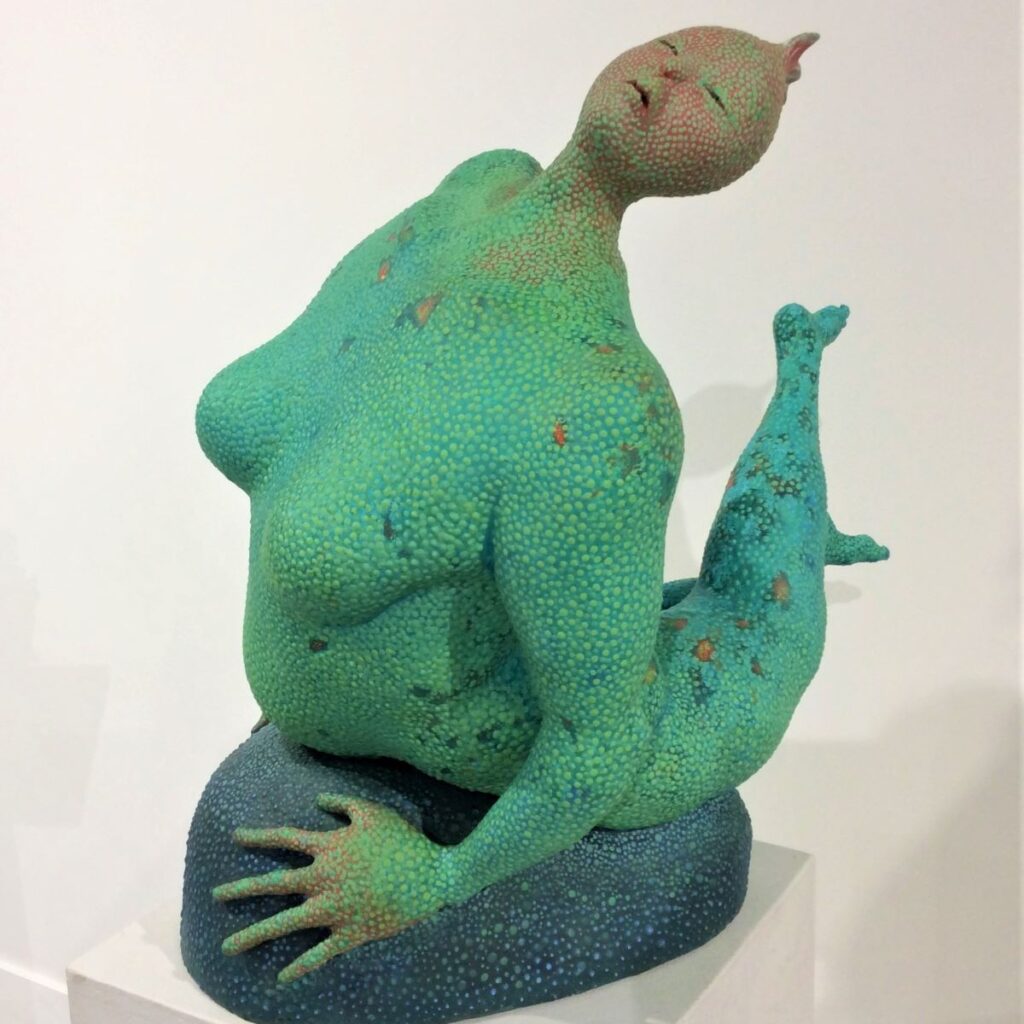The Canadian Sculpture Centre is staging its last exhibition in its current location in the Distillery District. This gallery has become a victim — among other cultural venues — forced to move due to the pressure of rising rents. The shortsightedness of our politicians and city planners is slowly but surely killing culture in Toronto, be it classical concert halls, theatres, art galleries, or cinemas to name a few.
This last exhibition at the Canadian Sculpture Centre is brilliant and bright, exploring works that are rich and varied. In addition to traditional mediums, there are new more rare pieces, like glass sculptures. There are also some that use found material in a very unusual way. Of the six artists in this show, three of them are new members: Michael Drolet, John McDowell and Karl Schantz, while the other three are re-new members, returning to the Sculptors Society of Canada after an absence: Alfred Engerer, Renato Foti and Sunmi Jung.
Installation view of New and Re-New Members
Renato Foti’s female torso immediately draws our attention, you must get closer to it. Tania is too beautiful to be a sculpture. It is more like a fashion model in a fascinating beaded dress that shows more of the body than it covers, so it seems naked. Foti started his career as a glass artist but throughout the decades he became interested in experimenting and his pieces became more complex, larger in size, and even figurative. He loves colour, integrating precious objects and mixing things up in creating his artwork. His technical expertise and excellent craftmanship have helped him to create wonderful art and, as shown in the three sculptures on display in this show, art and design go hand-in-hand. These glass pieces are cast and painted in bright colours, covered with waving lines that remind us of veins and then decorated with beads. Amazing.
Renato Foti, Renato, glass, epoxy, paint (left) and Tania, glass, epoxy, paint, glass beads (right)
John McDowell’s Captured Heart is very mystical and makes us want to know its story. How did this poor red heart get separated from its body and put into this metallic prison? The metal walls are made of copper and the patina gives them a colourful appearance. The red jasper heart is protected with wire. What is really happening here? Are we witnessing a heart that was taken from a living person to someone who is rich enough to order such a hideous crime? Or is it donated to save another life? What does the artist want to suggest to the viewer? There are so many possible interpretations. I like to think of it as a memento mori, putting the heart — the most important organ of our body — on some kind of pedestal, treasuring, honoring it and trying to keep it safe. The heart is also considered the center of our emotional life, imbuing this piece with another layer of meaning.
John McDowell, Captured Heart, copper, patina, wire, red jasper, brass rods
Turning away from McDowell’s work, I caught sight of Karl Schantz’s The Bird of Paradise, a mesmerizing piece. It must come from a place with a hot climate. This creature is beautiful with bright colours and radiates such a strong energy. Another exhibiting artist, Alfred Engerer was there when I visited, installing his neon piece, and talked to me about Schantz’s method. I’ve never heard an artist talk about a colleague’s work with such passion. He said that Schantz goes to places where old buildings are being demolished and collects the coloured glass pieces he uses in his artwork. The works are challenging. I didn’t recognize at first sight that they were made of glass. I thought it was painted metal or even some special kind of marble.
Schantz is interested in architectural history, especially ancient history with respect to its often futuristic elements. Urban Profile attests to this interest, combining various architectural elements. Different geometric shapes, like a triangle, a parallelogram, spheres, and waving lines create a one-of-a-kind structure, that never existed before and is too complex to be futuristic. An engaging balance is created that is almost overpowered by the bright, shining colours and playfulness of the composition. The artist considers his work ‘architectonic’.
Karl Schantz, Urban Profile, vitrolite glass, acrylic, steel, paint
Michael Drolet’s sculptures are also influenced by geometric shapes. The artist is interested in methods of construction and spatial relationships. His main focus is the material he uses in building his shapes. The final product is sometimes abstract or semi-abstract. C is for Compression, a wood piece is a good example of his process. The C is masterfully crafted, very smooth and displays the grain of the wood. At the letter’s opening there is a stack of wood pieces being compressed and kept in place by a darker brown wedge. We almost feel the force of the pressure.
Michael Drolet, C is for Compression, wood
At the back of the gallery stands Alfred Engerer’s small glass sculpture called Coral Garden. It is dark like a summer night. In that darkness colours shine and shapes seem to be moving. You can lose yourself in trying to figure out what those things are. Maybe they are flowers or the pink substance creating reefs, as the title suggests. But I can see other elements, like a dog’s red tongue in the middle. At the top left it looks like some thorny plant, maybe even a reef, but it might also be a summer storm with rain heavy clouds. The sculpture is an uneven cylindrical shape and because of its dark, shiny surface it also reflects some light and shapes. The piece is realistic and abstract at the same time. It is a pleasure to the eyes — also very lyrical, like a song frozen inside the glass.
Alfred Engerer, Coral Garden, cast glass
Sunmi Jung’s sculpture, Sun Fish is also a mixture of fantasy and reality. It is a strange combination of a bird, a fleshy woman and a mermaid. The creature has a small head reminding us of a bird’s, a very large body of a woman and tiny feet. Its body is covered with goosebumps or fish scales. The pose is definitely a fish’s movement when it jumps out of the water for a moment. The body is painted in watery blue, the fish scales are greenish like algae, and the head is mostly pinkish. There are small creatures suggestive of the underwater world appearing on parts of the body. It is a hollow earthenware piece. The artist mentioned in her talk that the bright colours represent her state of her mind and emotions. She expresses her inner life by using the inspiration she gets from dreams and making them somewhat realistic.
Sunmi Jung, Sun Fish, earthenware, acrylic paint
This is a wonderful exhibition, well worth a visit. Go there, enjoy the gallery’s show and say farewell to this location. We hope that the Canadian Sculpture Centre will find a new home soon. In the meantime, we will miss its exhibitions and lively opening receptions.
Emese Krunak-Hajagos
Images are courtesy of the Canadian Sculpture Centre
*Exhibition information: New and Re-New Members, March 2 – 31, 2023, Canadian Sculpture Centre, 19 Mill Street, Distillery District. Gallery hours: Tue – Sat, 11 am – 6 pm; Sun, 12 – 5 pm.

